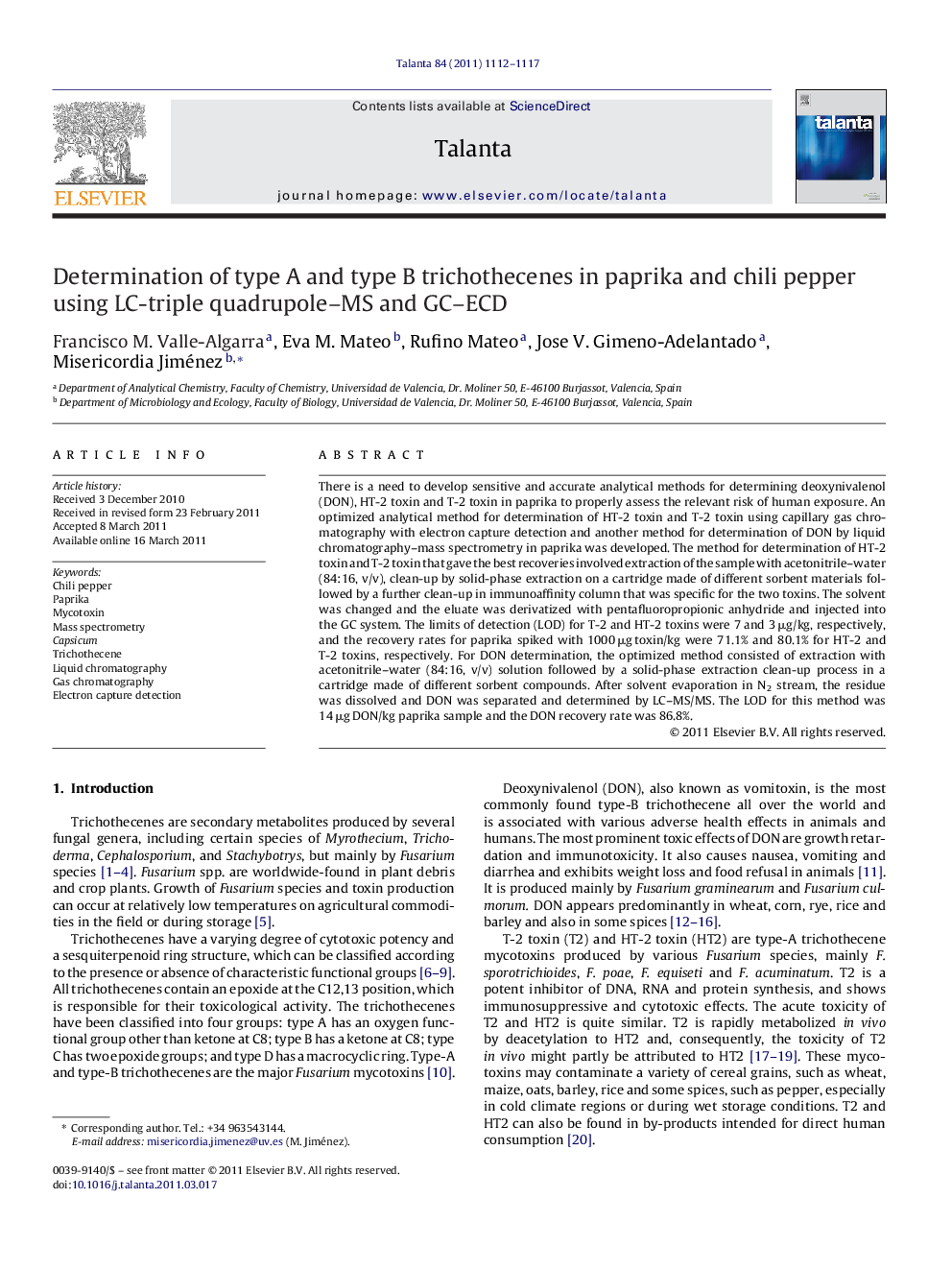| Article ID | Journal | Published Year | Pages | File Type |
|---|---|---|---|---|
| 10560022 | Talanta | 2011 | 6 Pages |
Abstract
There is a need to develop sensitive and accurate analytical methods for determining deoxynivalenol (DON), HT-2 toxin and T-2 toxin in paprika to properly assess the relevant risk of human exposure. An optimized analytical method for determination of HT-2 toxin and T-2 toxin using capillary gas chromatography with electron capture detection and another method for determination of DON by liquid chromatography-mass spectrometry in paprika was developed. The method for determination of HT-2 toxin and T-2 toxin that gave the best recoveries involved extraction of the sample with acetonitrile-water (84:16, v/v), clean-up by solid-phase extraction on a cartridge made of different sorbent materials followed by a further clean-up in immunoaffinity column that was specific for the two toxins. The solvent was changed and the eluate was derivatized with pentafluoropropionic anhydride and injected into the GC system. The limits of detection (LOD) for T-2 and HT-2 toxins were 7 and 3 μg/kg, respectively, and the recovery rates for paprika spiked with 1000 μg toxin/kg were 71.1% and 80.1% for HT-2 and T-2 toxins, respectively. For DON determination, the optimized method consisted of extraction with acetonitrile-water (84:16, v/v) solution followed by a solid-phase extraction clean-up process in a cartridge made of different sorbent compounds. After solvent evaporation in N2 stream, the residue was dissolved and DON was separated and determined by LC-MS/MS. The LOD for this method was 14 μg DON/kg paprika sample and the DON recovery rate was 86.8%.
Keywords
Related Topics
Physical Sciences and Engineering
Chemistry
Analytical Chemistry
Authors
Francisco M. Valle-Algarra, Eva M. Mateo, Rufino Mateo, Jose V. Gimeno-Adelantado, Misericordia Jiménez,
